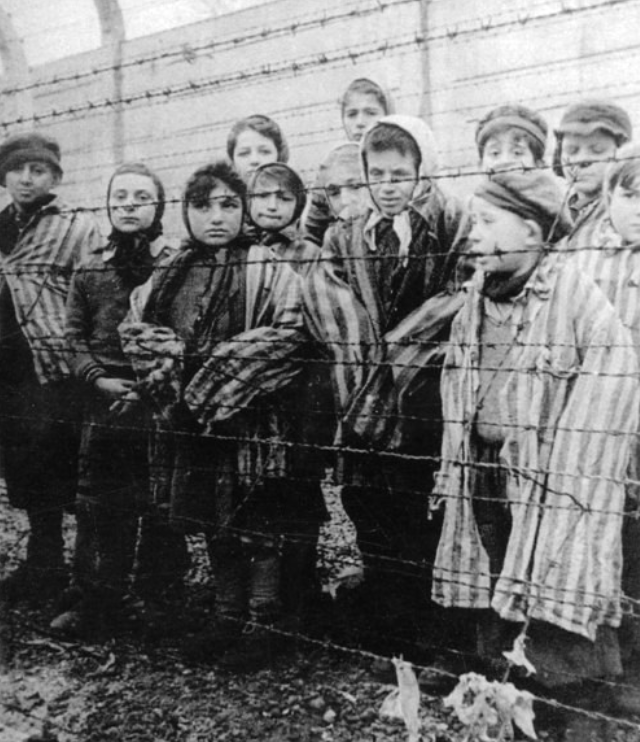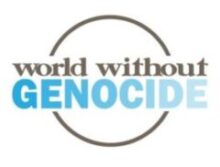When World War II ended, 6 million Jews were dead. One of every four of the dead were children. We all are familiar with Anne Frank’s journal, translated into more than 65 languages and certainly the most famous Holocaust diary. But many children kept diaries.
Children’s Holocaust diaries and journals can be grouped into three categories:1
- Those written by children who escaped German-occupied regions and became refugees;
- Those written by children living in hiding; and
- Those by young people living in ghettoes, occupied territories, or concentration camps.

Child survivors of the Holocaust a few days after the liberation of Auschwitz concentration camp by the Red Army, January, 1945.
Children who wrote about their refugee lives expressed the panic in searching for safe havens and the wrenching pain of leaving their home, language, culture, and community, the complete upheaval of their families and their childhoods. Many children were separated from their families; parents sent children away to keep the children safe, promising to reunite after the war. But many of those parents were murdered and the children never saw their parents again.
Children who lived in hiding often lived in the open but with false identities, trying to be concealed as non-Jews in a brutally dangerous world. Their journals reflect the deep fear and trauma of every moment of their lives.
And children in the ghettoes, German-controlled areas, and concentration camps wrote about the peril of their existence because they knew, with deep foreboding, what was going to occur.
One of the most famous child diarists is Petr Ginz.2 Petr lived in Prague, the son of a Jewish father and a non-Jewish mother. His diary records the normal activities of any young person – school, time with friends and family – juxtaposed in clear and forthright prose with the announcements that beloved family members are being ‘transported,’ taken away for extermination, and the step-by-step peril to Jews’ very existence. Petr himself was sent to Terezin (Theresienstadt), a concentration camp outside of Prague, where he organized other young people into creating a clandestine, hand-written weekly magazine that came out on Shabbat, the Sabbath.
His descriptions of his life in Prague before Terezin are haunting, and the magazine, called Vedem, meaning We Lead, contains the poignant, heart-breaking words about being a young Jew doomed for certain death, yet having courage to continue to inspire others every day.
Petr was transported to Auschwitz and murdered when he was 16 years old. His diary was found under unusual circumstances – a mystery worth reading about.
A remarkable adult diary is that written by Herman Kruk,3 who recorded his life and conditions in the Vilna ghetto and concentration camps in Estonia. He buried his journals shortly before he and other inmates were shot and their bodies burned.
These personal stories illuminate the courage of the human spirit during this most grievous time.



